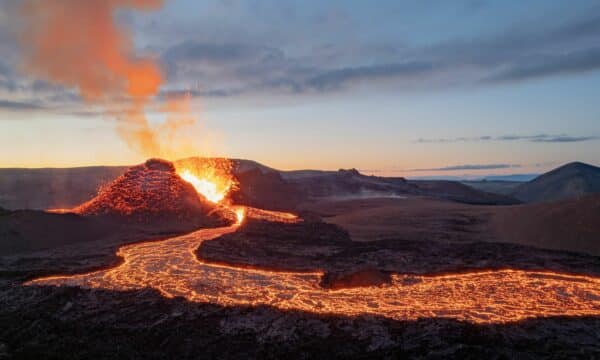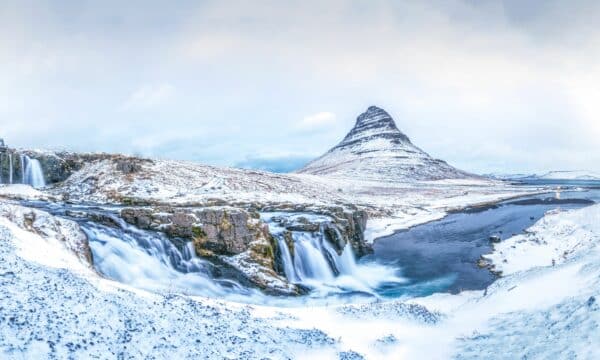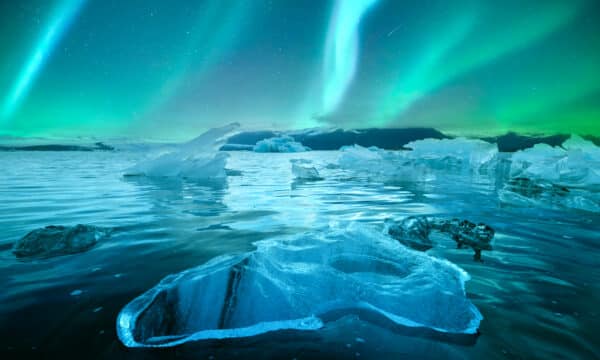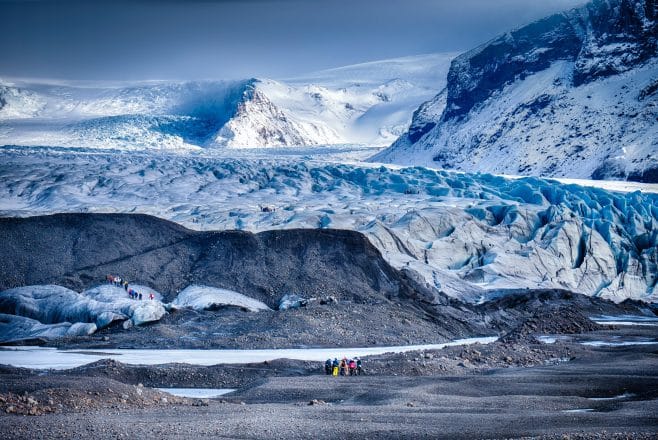
Cover Photo: 3-Hour Glacier Hike in Skaftafell Nature Reserve
If you’re looking to try your hand at glacier hiking, Iceland makes for the perfect destination to do so. Glaciers cover around 11% of the country’s landmass, providing easy access for adventure-seekers as well as awe-inspiring views.
Glacier hiking is a fun and exhilarating activity for both new and seasoned hikers. Traveo offers various glacier hikes with varying difficulty levels, meaning that it should be easy to find a perfect tour that fits your needs.
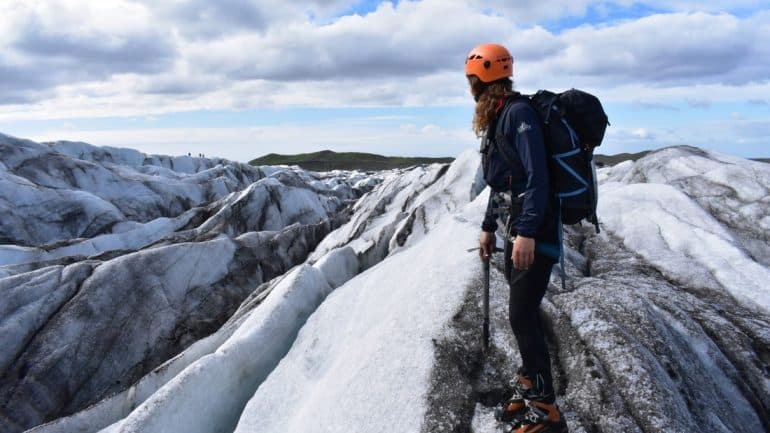
People join glacier hiking tours for a variety of reasons. Conquering a colossal glacier is one, witnessing the Icelandic landscapes from a new perspective is another.
For me, the best thing about glacier hiking is the serenity found on top of a glacier. Here, you are far away from all human interference: no car noises, no street lamps, no people other than your group. Here, you can truly appreciate how free the Icelandic nature really is.
How are glaciers in Iceland formed?
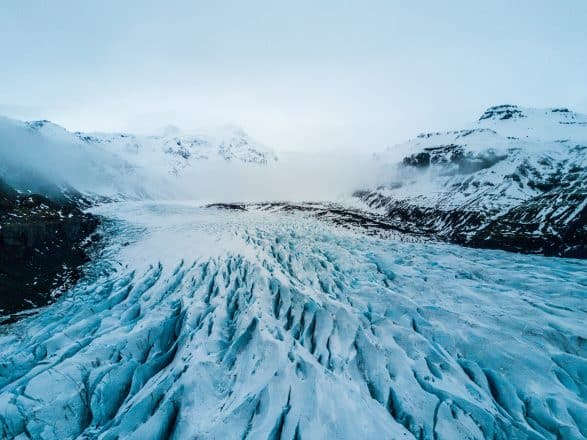
Before tackling a glacier hiking excursion, preparation and knowledge are necessary for those visitors looking to maximise their experience.
For one thing, it is fascinating to understand how such vast and dense bodies of ice can arise in a country that, regardless of its name, is surprisingly temperate for much of the year.
There are roughly 270 named glaciers in Iceland, which only shows the diversity and proliferation of such phenomena. The reasons behind their distribution across the island can be attributed to changes in topography, precipitation and air temperature.
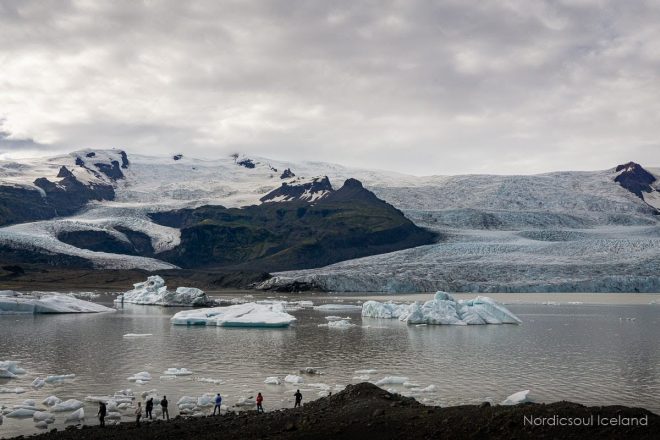
Glaciers form in areas that see consistent snowfall over many years and decades. Layers of snow become densely packed overtime, compressing and forcing it to recrystallise into what are known as “glacial grains”.
As these grains become tighter, air pockets form around them, pressuring the snow until it becomes “firn”. As an intermediary form, firn refers to the state of snow just before it becomes ice, and is generally measured as two thirds the density of water.
Over the next hundred years or so, the glacial grains continue to enlarge, forcing the air pockets between them to get smaller and smaller.
And there, ladies and gentlemen, is about the gist of how a glacier is formed. I could go into more detail, but that’s a slippery slope considering there is so much more to discuss!
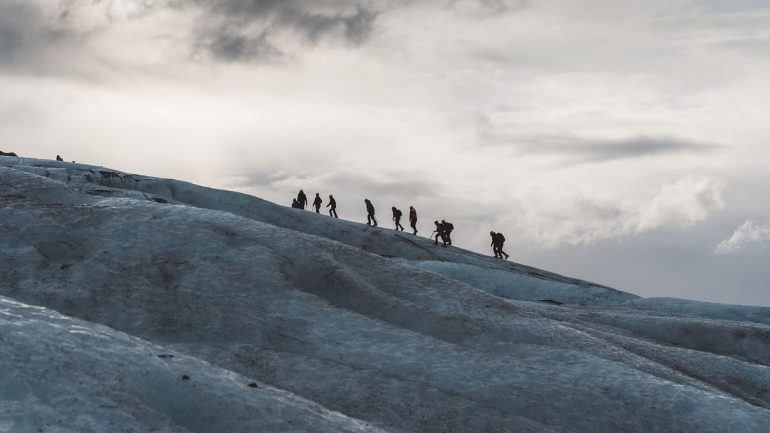
Interesting facts about glaciers in Iceland
- The Icelandic word for Glacier is Jökull, so this term is found at the end of most named ice caps in the country.
- Iceland’s first glaciers melted around 12,000 years ago with the end of the last Ice Age. The glaciers that can be seen in Iceland today began their formation around 2500 years ago.
- Many glaciers in Iceland cover active volcanoes. Examples of these include the likes of Eyjafjallajökull, Öræfajökull, Bárðarbunga and Grímsvötn.
- Dense glacier ice absorbs the colour red, leaving behind the vibrant blue shade that has become a famed subject among travel photographers.
- Glacier crystals, or “glacial grains”, can grow to the size of a human fist.
- Vatnajökull is the biggest glacier in Iceland, covering approximately 8000 square kilometres. Vatnajökull also happens to be the largest glacial mass in Europe.
- On the opposite end of the country to Vatnajökull, Langjökull is the second-largest glacier.
- On clear days, the devil-horn peaks of Snæfellsjökull glacier can be seen from Iceland’s capital city, Reykjavík, while looking out over the waters of Faxaflói Bay.
- Snæfellsjökull glacier has a central role in Jules Verne’s classic novel, Journey to the Centre of the Earth (1871). The book has been adapted to screen twice; first in 1959, then 2008.
Is glacier hiking in Iceland safe?
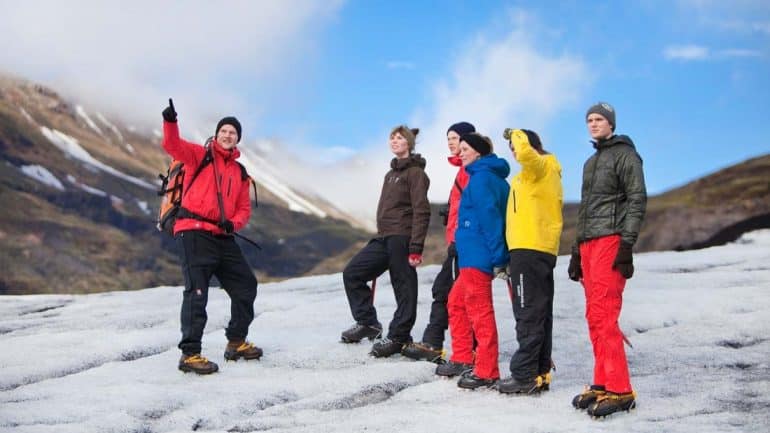
Yes, it is safe. However, like all adventurous activities, there is an element of risk that should always be respected when glacier hiking in Iceland. Namely, never go out on a glacier without a trained glacier guide.
To ensure your safety, you must adhere to the rules laid out by your tour guide. This advice goes for all adventure tours in Iceland, not only glacier hiking. It should be treated as gospel considering the experience and knowledge that a professional guide brings to the table.
It is part of their job to navigate the safest route across the ice cap, treading where the sheet is at its most dense, and pointing out any crevasses that might pose a danger.
What equipment do I need for glacier hiking in Iceland?
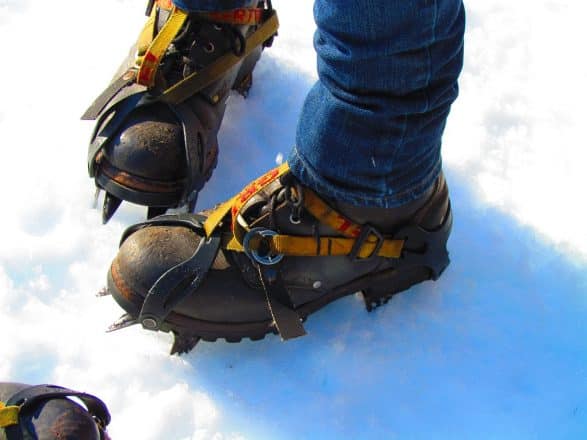
Before you set foot on a glacier, your guide will provide you with all equipment necessary for a safe journey. These include:
- A helmet
- Walking pole or an ice axe
- Pair of crampons (spiked traction devices slipped over your footwear)
On some glacier hikes, your guide may also hand out harnesses with carabiners (shackles) and ropes, depending on the terrain ahead.
Ensure that you are dressed sensibly before embarking on your tour. Opt for woollen sweatshirts and fleeces, rather than cotton, and make sure to avoid denim at all costs as it soaks and withholds water. With that in mind, make sure you wear both a water and windproof jacket on your hike.
Gloves and scarves also have their place for those looking to avoid the inevitable wind-chill that comes at high altitudes. As well as a thin hat or balaclava to wear underneath your helmet.
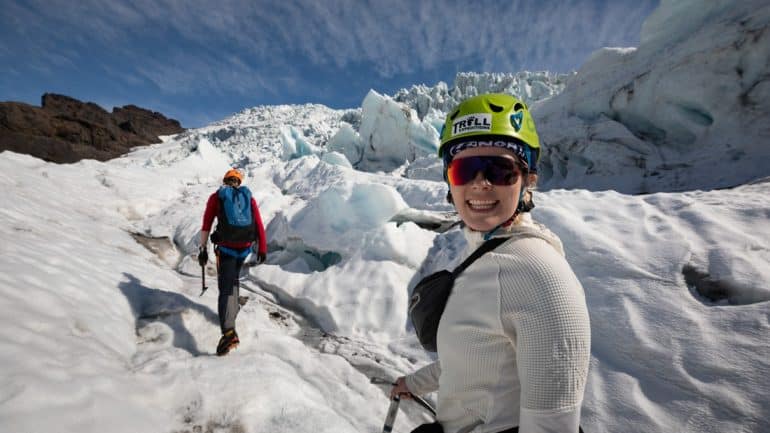
Waterproof hiking boots are a must for those embarking on a glacier hike. They should have a rugged sole and cover your ankles so the crampons can fit comfortably over them. Many tour operators offer a rental of a pair of hiking boots during the booking process.
Ensure you are wearing all of your outdoor gear before you show up for your glacier hiking tour. That way, you are not holding up the group by changing your clothes or shoes, and you will get more time on the ice.
What is the best time of year to glacier hike in Iceland?
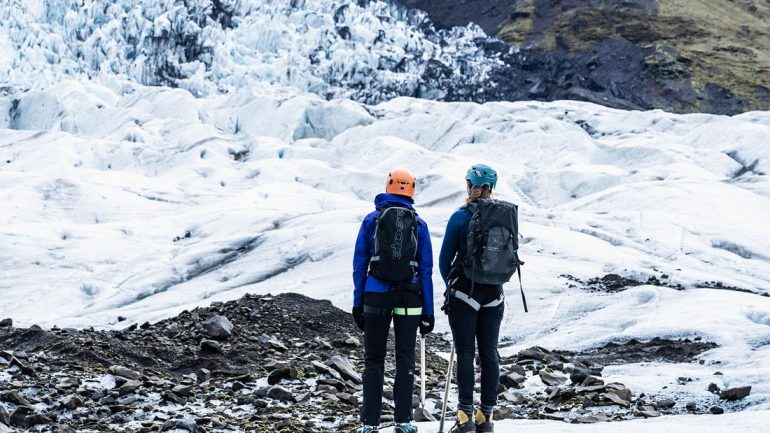
The vast majority of glacier hikes are available throughout the year, but each season comes with its benefits. The ice is also ever-changing so return guests will get an entirely new experience should they wish to partake during their second visit to the country.
Summer in Iceland lasts from May to September, while winter runs through October to April. If you want to learn more about what each season offers, make sure to read our feature articles A Complete Guide to Visiting Iceland in Winter and A Visitor’s Guide to the Midnight Sun in Iceland.
Glacier hiking in the summer in Iceland
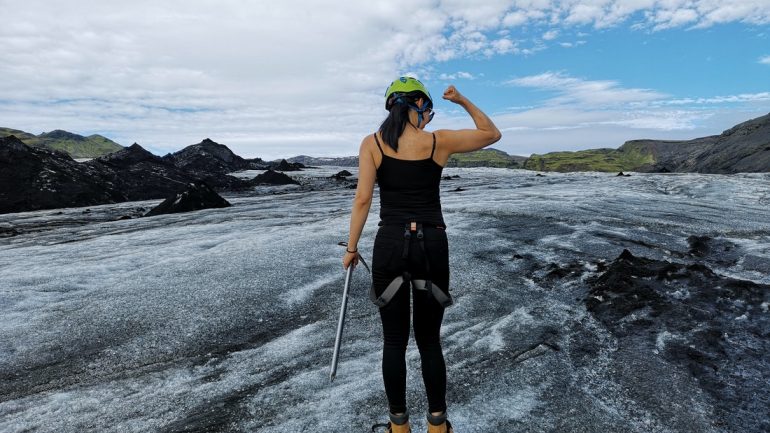
Glacier hiking in the summer has apparent advantages to its chillier counterpart, the first of which is more pleasant weather.
Though Iceland might be known for its cold temperatures, wind and rain, summer visitors will find their time outdoors surprisingly bearable. The Midnight Sun remains high in the sky well into the night, creating a warm and pleasant ambience for those immersed in nature.
Better weather means that you can walk in more comfortable clothes and that there is little fear of having to shorten the excursion because someone in your group cannot handle the cold.
Summer excursions are far less likely to be rescheduled, or cancelled even, due to awkward weather conditions, which is excellent news for travellers on a tight schedule. Aside from this, clear weather allows for a genuine appreciation of Iceland’s landscapes when seen from atop a glacier.
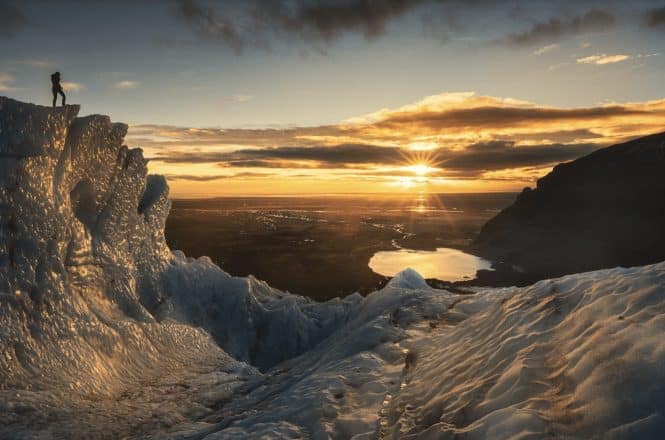
Whether you are witnessing the South Coast, with its fabulous nature reserve, Skaftafell, or the rugged and ethereal Snæfellsnes Peninsula, each of Iceland’s regions is sure to impress you through a panoramic perspective.
If you are looking to hike on a particular glacier, be sure to check its seasonal availability aligns with your visit. Sólheimajökull and the glacier tongues found in Vatnajökull National Park are available year-round, but tours on Snæfellsjökull only operate in the summers.
Glacier hiking in the winter in Iceland
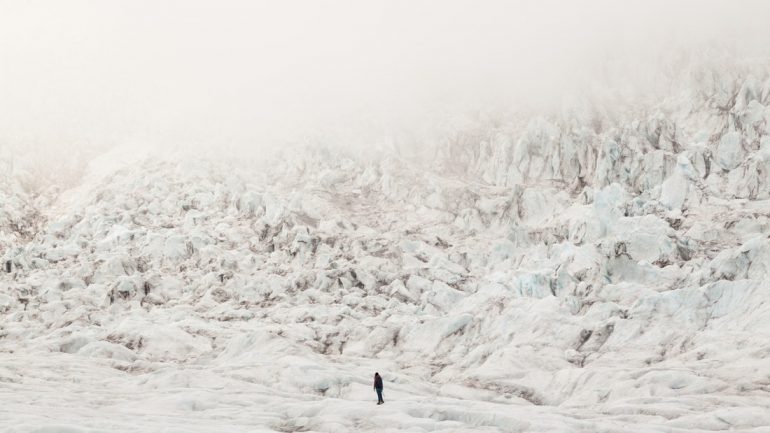
While it is true that winter excursions are more likely to be cancelled or moved due to the weather, it should be stated here that this is always a travel operator’s last resort. Winter conditions make glacier hiking more challenging due to the cold, cloud cover and early sunset, but there are fantastic perks too!
For one, Iceland’s glaciers appear much cleaner in winter, untarnished by the volcanic ash of prior eruptions or the carved out trails of tour parties who have already passed by.
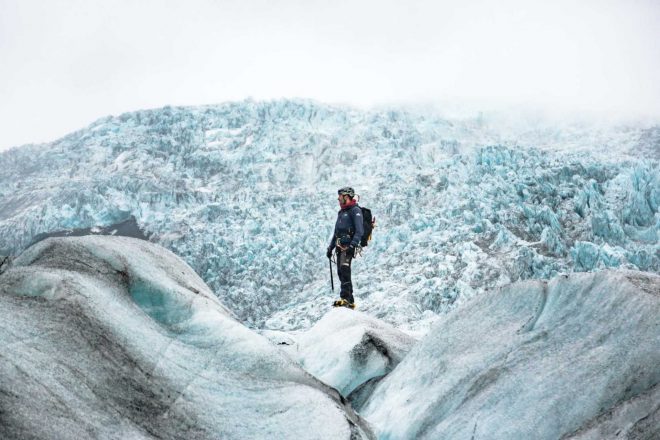
Winter visitors are privy to ice so crystal clear and oceanic blue that the sight of the glacier appears almost fantastical. No surprise, then, that Iceland’s glaciers were utilised as a shooting location for HBO’s popular television series, ‘Game of Thrones.’
Finally, hiking on a glacier is considerably more adventurous during the winter than it is in summer. Braving the elements can be especially rewarding for travellers of a certain temperament, especially if combined with add-on experiences such as ice caving.
What glaciers can be hiked in Iceland?
There are several glaciers dotted around the country that boast optimum terrain for eager hikers. Each ice cap offers its advantages, though are generally interchangeable regarding the basic requirements of what is expected from a glacier hiking tour:
Staggering viewpoints and breathtaking vistas; physical challenges and heights to be conquered; intricate and naturally formed ice sculptures, moulins, sinkholes and crevasses; all are waiting to be discovered amidst the snow-peaked mountains of Iceland.
Glacier hiking on Sólheimajökull
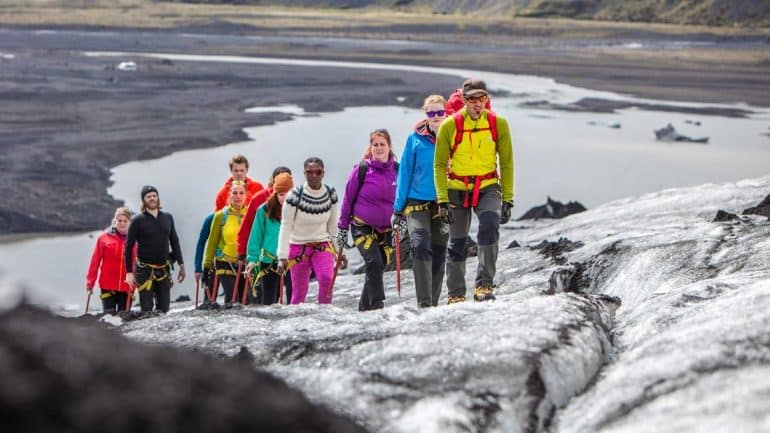
Found within the highland portions of South Iceland, Sólheimajökull branches off from the much larger Mýrdalsjökull, itself located between the volcanoes Katla and Eyjafjallajökull.
The name translates to Sun Home Glacier and is considered one of Iceland’s most picturesque glacial tongues, extending to around 8 kilometres in length and 2 kilometres in width. It’s proximity to volcanoes provides hikers with proof of why Iceland is known as the land of fire and ice. The white glacier ice is, in places, streaked with black volcanic ash from previous eruptions.
Thanks in large part to its easy placement alongside the Ring Road, visitors looking to navigate towards this attraction will only have to travel 2 hours east from Reykjavík. Hiking here is also a great way to break up a sightseeing tour of Iceland’s South Coast with a spot of adventure.
Skaftafell glacier hike in Vatnajökull National Park
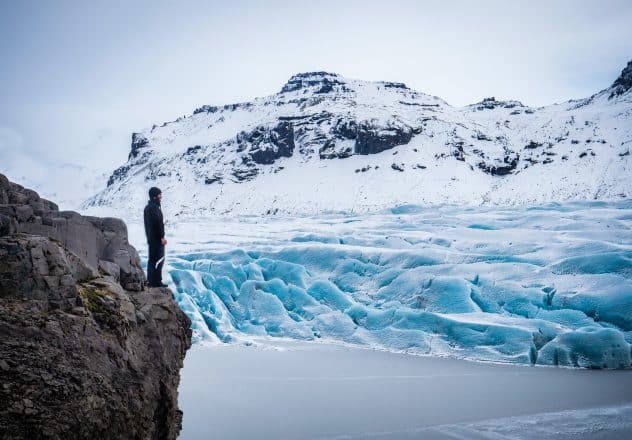
As previously mentioned, Vatnajökull (Water Glacier) is Iceland’s largest ice cap, dominating around 8% of the country’s total landmass. Such stats, however, cannot convey the sheer majesty of the national park in which it resides.
To give you some idea, some context, as to how enormous Vatnajökull is, its glittering ice covers entire valleys and mountain ranges, including Iceland’s highest mountain peak, Hvannadalshnúkur.
As such, it is right to assume that many glacier tongues branch off from Vatnajökull, and each is as different from the last. Thankfully, a few of these are accessible to hikers, which is fortunate thanks to the gorgeous South Iceland scenery on offer.
Most glacier hiking tours on Vatnajökull depart in or near the Skaftafell Visitor’s Centre. Founded in 1967, Skaftafell was once a nature reserve in its own right, before merging into the greater area of Vatnajökull National Park in 2008.
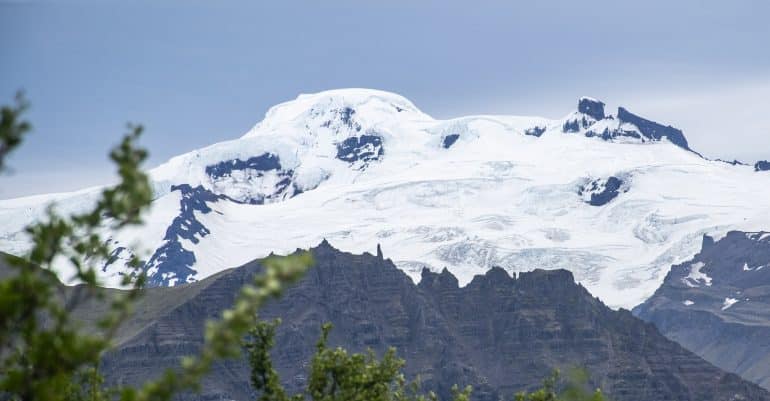
The region is beloved by guests and locals alike for its black sand deserts, luscious mountain slopes and wild, glacial terrain. No surprises then that some of Iceland’s most treasured sites are located within Skaftafell.
On which glacier tongue you’ll hike depends on the weather and conditions on the ice. The most common stops are Falljökull Glacier followed by Skaftafellsjökull. Previously, tours to Svínafellsjökull outlet tongue were popular, however, that area is now closed due to un
Falljökull Glacier
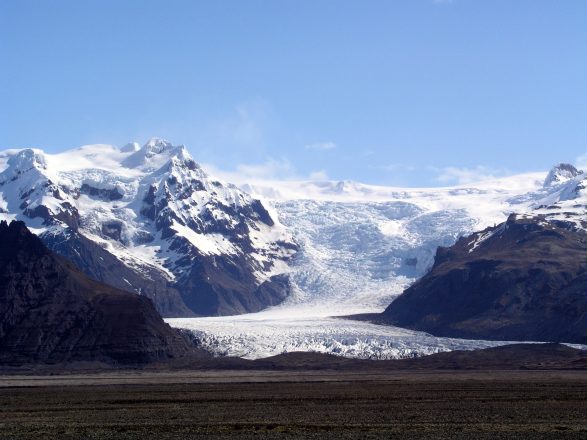
Falljökull (Falling Glacier) is a beautiful glacial tongue that showcases the surrounding landscapes of Vatnajökull.
The glacier’s name is derived from the historical sight of ice tumbling down the black and volcanic cliff edges of Skaftafell. It creeps up the mountains, providing a challenging, but enjoyable ascent that is well worth the effort.
Strictly speaking, Falljökull could be described as a multi-layered waterfall, albeit one that has condensed over thousands of years.
As you move carefully along the ice, Iceland’s tallest peak, Hvannadalshnúkur, will tower over your party. Take it from us that such an image adds real drama to your efforts.
On either side of this sweeping ice field, moss-laden lava rock encloses the glacier, adding various colours and texture to the scenery.
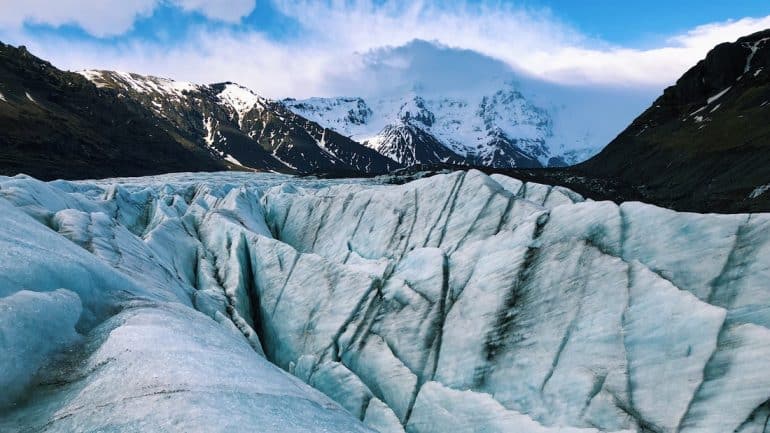
Skaftafellsjökull Outlet Glacier
Hikers might be interested in Skaftafellsjökull outlet glacier, particularly the eight-kilometre (five-mile) trail that leads to-and-from the dramatic Svartifoss waterfall.
During their glacier hike, guests will be blessed with an unforgettable vista that is sure to draw the air from their lungs; the countryside of South Iceland, bearing upon them in all its eclectic and natural splendour.
Participants on this tour experience will begin their journey as Skaftafell Visitors Centre, which all makes for a fantastic place to learn more about the history, nature and culture that makes up the region.
Svínafellsjökull Glacier
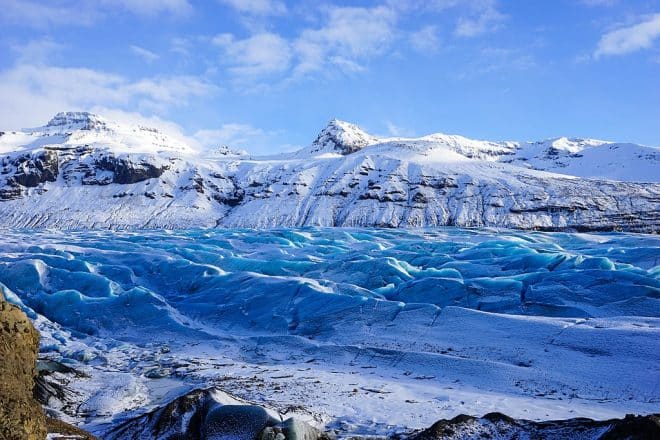
Though closed now, Svínafellsjökull was once one of the most popular glacier trails in Iceland.
The cap itself is made up of sharp ridges which are surrounded by luscious flora in the summer. Though it is not possible to climb those ridges, they are quite stunning to behold.
The beauty of Svínafellsjökull has long been known to the locals. However, it has not gone unnoticed by the rest of the world, especially film and television producers. Several scenes ‘North of the Wall’ were filmed at Svínafellsjökull for HBO’s fantasy series, Game of Thrones.
Iceland is an active country, with winds, volcanic eruptions, and earthquakes still shaping the island. Unfortunately, sometimes that means that areas are not safe to enter. That is the case of Svínafellsjökull right now. Rockslides and fractions in the ground have halted all tours to the region, and no glacier guide will go there until it is perfectly safe.
Glacier hiking on Snæfellsjökull
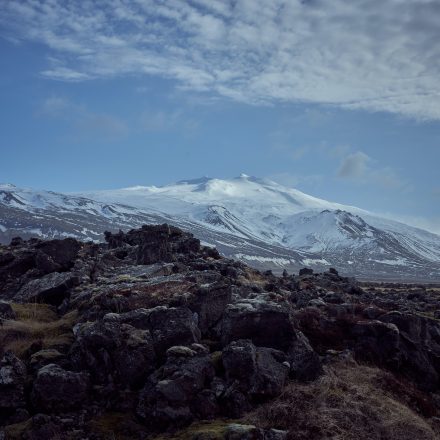
New-Age thinkers believe that Snæfellsjökull is one of the Earth’s mystic ‘Energy Centres’. Personally, I do not place much credence on this, but there is a certain magic the stratovolcano emanates that’s hard to deny.
Perhaps it’s due to its coastal placement, perched on the far end of Snæfellsnes, the peninsula that bears its name. The mountain and glacier make for a dominating presence on the horizon line, naturally drawing the eye, and playing on emotions often overlooked.
The glacier is a whopping 700,000 years old; one clear reason why it has a staple place in Icelandic folktales. A famous Saga, Bárðar saga Snæfellsáss, was written in the late 14th-century and told of Bárður, a half-man, half-troll who ascended to become the ‘guardian spirit of Snæfellsjökull’.
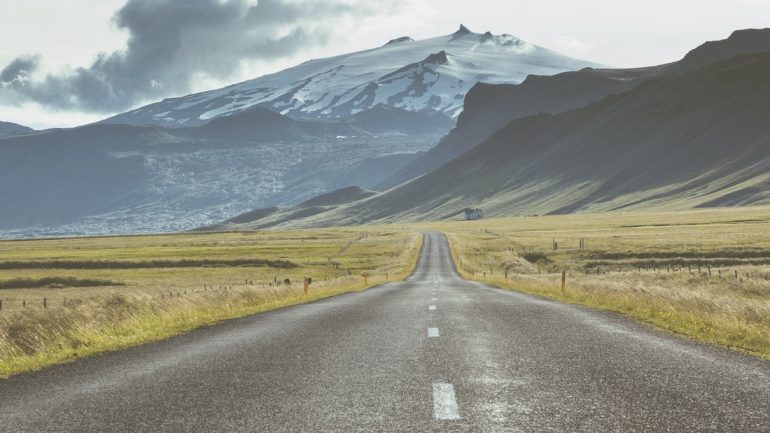
Today, Snæfellsjökull is a popular spot among hikers, offering fantastic views over the Snæfellsnes Peninsula, as well as a close-up look at the pure and ethereal beauty so characteristic of Iceland’s ice caps.
Only available in the summer, glacier walking on Snæfellsjökul is considered one of the country’s more challenging hikes though you’ll be rewarded with fantastic views. So, if you’re hoping to take part in a tour here, make sure you have the physical fitness to make the most of your time on the mountain as reaching the true summit of Snæfellsjökull requires ice climbing.
Can you go ice caving on a glacier hike in Iceland?

Yes, you can. Short glacier hikes are often necessary to reach the entrance of an ice cave, especially in Vatnajökull National Park. While hiking is not considered the sole attraction of the experience, it can scratch the itch for those short on time or constrained by a budget.
Those looking for a more extensive glacier hike with their ice caving tour can book a specific tour which combines both activities. These tours allow their participants to explore both the surface and inside a glacier.

Most ice caves are only available to visit during the winter when the caves are frozen and free of meltwater. Famed for their vibrant blue ice, this includes the most widely photographed ‘Crystal’ caves that can be found within Vatnajökull National Park.
The only ice cave available year-round is the Katla Ice Caves on the South Coast. However, getting to it, especially in the summer, requires little to no glacier hiking.
Can you visit a glacier lagoon during a hiking tour in Iceland?
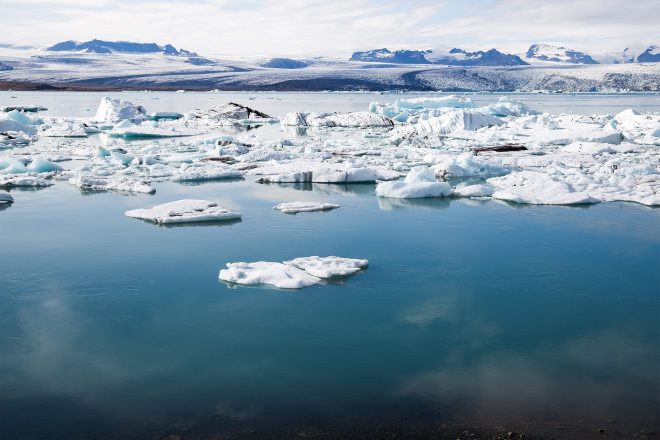
Glacier lagoons are lakes at the base of glaciers. They form when a glacier erodes or recedes and the depression it leaves behind get filled with meltwater.
Generally, a visit to Iceland’s glacier lagoons is not officially included as part of a hiking tour. However, those planning on hiking the pearlescent slopes of Vatnajökull ice cap will often discover the country’s most treasured lagoon, Jökulsárlón, given that it is widely used as a meeting point for different tour companies.
Aside from its swooping sea birds and playful seal colony, the lagoon is best characterised by its floating icebergs, the likes of which create a heavenly and tranquil atmosphere.
These icebergs can be seen gently travelling towards the open ocean, where they often wash up in picturesque nuggets on a nearby black sand shoreline known as the Diamond Beach.

Diamond Beach is only a short walk from Jökulsárlón lagoon, making it another easy stop for those determined to discover South Iceland’s most stunning locales.
Another, less famous, glacier lagoon has formed in front of Sólheimajökull. Though not as sparkling blue as Jökulsárlón, the glacier lagoon at Sólheimajökull is also filled with enormous icebergs and can be easily spotted on a glacier hiking tour.
What does the future of glaciers look like in Iceland?
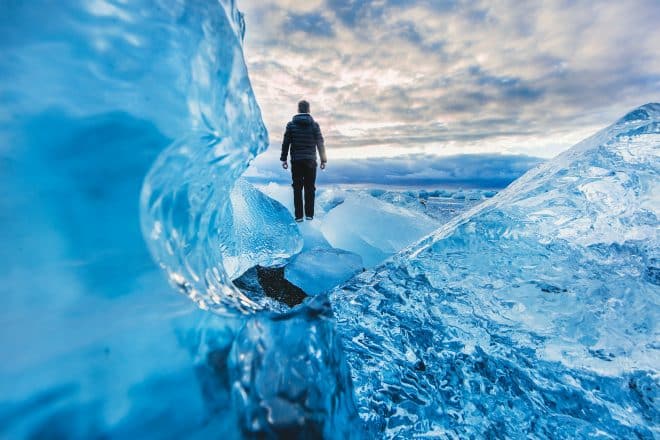
The evidence of a steadily-warming climate is all too apparent in Iceland. The consequences of our prior inaction are there for all to see, fuelling the drive for further conservation efforts to be implemented.
Iceland’s glaciers were at their largest between the years 1890-1920. In the decades that followed, close measurements demonstrated their recession, with the eighties being particularly worrying in regards to this downward trend.
Of course, it is now in our modern era that we are forced to deal with the environmental catastrophe left on our doorstep. No longer able to avert our eyes, the evidence is all around us, inescapable and demanding of attention.
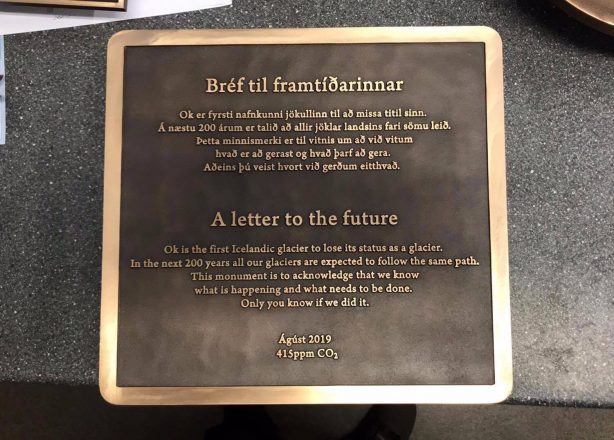
Take the summit of Snæfellsjökull, for example, which was seen entirely without ice in August 2012. This unprecedented sight was the first time in recorded history that the mountain was naked of its glacial cloak.
Outlet glaciers like Skaftafellsjökull and Breiðamerkurjökull are also seen to be receding at a tremendous rate annually. Scientists from various fields of expertise fear that even our most outstanding efforts to combat a runaway climate are too little too late.
Some glaciers in Iceland have already disappeared completely; namely, Okjökull, declared ‘dead’ in 2014. A ceremony to mark the sad occasion was attended by many scientists, artists, writers and politicians, including Prime Minister, Katrín Jakobsdóttir.
All of the above leaves us with a troubling realisation. If such titans of the landscape can vanish as if they were never there, is now not the time to recognise the hour of no-return draws ever closer, if indeed, it has not arrived already?

